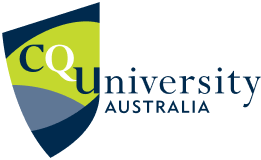Copyright for Research
Conducting research
Copyright is a type of intellectual property law that protects a person’s creative work. It is designed to prevent the unauthorised use of a work. Your research will most likely require you to use material that is covered under copyright law.
Copyright provision for research will differ depending on whether you are conducting your research or publishing a research output, such as an article, book, conference paper or dataset.
For research and study purposes you can copy a certain amount of copyrighted material for the purpose of research. This is called Fair Dealing. Fair dealing is based on the idea of a reasonable amount. For research or study this is specified as:
- 10% of the pages or one chapter of a book, or one article from a journal issue.
- One article from an issue of a journal (or more than one if the entire edition is on the same topic).
- 10% of notated (sheet) music.
- An insubstantial portion of an audio-visual work.
- 10% of the words from an online or electronic source that is not divided into articles or chapters.
It is important to note that when considering using digital material under Fair dealing it may be overruled by any Terms and Conditions that you have agreed to by signing up to a service. A common example is the downloading of content from streaming services such as YouTube which is prohibited by the platform’s Terms of Service.
In some cases as a part of your research you will need more a certain type of material than is allowed by the fair dealing allowances. There are two options available in this scenario, seeking permission from the copyright owner or choose Open Access material.
Regardless of if you are using copyrighted, commercial or Open Access content it is important to properly acknowledge any content that is used. This is done by providing a citation for all content not created by you, as well as for content you personally might have created which has been previously published elsewhere.
The choice of citation style will vary depending on a number of factors, including discipline and publisher requirements. Citation style needs to be consistent across the document and needs to include all information to allow the reader to locate the source cited easily.
Whether it is research data you have created as a part of conducting a research project or 3rd party data that you are using within your research copyright needs to be a consideration.
Details on how to publish datasets to aCQUIRe is available from the Using Data Manager page.
Some journals may require that Open Access datasets are published in their dedicated data repositories, if this is the case this will be outlined when your publication is accepted with the journal.
There can be a variety of restrictions on what types of data can be published openly. Details about working with sensitive data, including a link the Sensitive Research Data Tool is available from the Working with Sensitive Data page.
Research involving Aboriginal and Torres Strait Islander peoples and communities should be carefully considered during the research and publication process, as outlined in the AITSIS Code of Ethics for Aboriginal and Torres Strait Islander Research. All Aboriginal and Torres Strait Islander research involves the use of Indigenous and Intellectual Property (ICIP). CQUniversity researchers conducting research involving ICIP are encouraged to formalise the following in a written agreement with the ICIP owners or custodians.
- Access and distribution of research results
- Intellectual Property rights for publication
- Copyright for publication
- Authorship for publication
Australian copyright law has not yet been updated to consider the implications of content created by Artificial Intelligence (AI). Currently in Australia copyright is not present in works created by non-humans. However there is current debate underway about how much “independent intellectual effort” someone needs to apply when using AI tools before copyright is present.
In order to ensure you are fully informed you should review the licence conditions of any AI tool prior to uploading research content for analysis. You need to make sure that the licence explains conditions such as:
- Do you retain copyright ownership of your content uploaded?
- Is uploaded content included in the language model for future users?
- Who owns the Intellectual Property or Copyright for any outputs from the tool? This is particularly important for any research that might have future commercial advantage, such as patent applications.
Further information on this topic is available from the Australian Copyright Council Factsheet: Artificial Intelligence & Copyright.
Publishing research
With all creative works, including research publications, being protected by copyright it is important to know your rights as a creator, and your responsibility when using other’s copyrighted content as a component of your own publications. This section covered both of these areas of conducting research.
While you are the author of journal articles you write, you may no longer own the copyright of the papers after they are published. This will all depend on the publishing agreement signed by you as the author. The allowances of what you can do with a published article vary greatly. Most publishers will include details of how you can use the published content in the author agreement signed at the time of publication.
When reviewing your publisher agreement, it is important to note if there is any reference to transferring or assigning copyright to the publisher. If you agree to these conditions you will be limiting how you can use your publication in the future. You are able to request to retain copyright ownership of your published article. Where the publisher does insist on the transfer of copyright, you should assert your right to deposit your work in aCQUIRe under a suitable addendum. If you are an RHD student you should also ensure that signing an agreement with a publisher does not inhibit your ability to publish future works off the same material as this will inhibit your ability to publish your thesis.
Open Access publishing is now the preferred model of publishing. Mandates from funding bodies are driving the shift to this publishing model.
It is important to understand the difference between legal copyright ownership and other moral rights and allowances. Even if copyright is signed over to the publisher you are still the author of the paper. Citations of the paper will acknowledge the original author rather than the publisher and will enhance your author profile. This right of attribution is the main element of moral rights that is of interest to researchers. If you wish to use the publication that you no longer own the copyright on, you are still able to quote it like you would any other publication. To use more than is allowable for quotation, you will need to seek permission from the copyright owner like any other 3rd party content.
Social networks targeted directly at researchers such ResearchGate, Academia.edu and SSRN often encourage the sharing of publications. However it is not uncommon to find papers that are in breach of copyright on researcher social networks such as ResearchGate and Academia.edu. It is important that before you upload any content to these platforms you need to confirm that you have appropriate copyright permissions to share. Also when using content from these platforms you must be careful that they are legitimate OA versions. If you are not sure please search for the official published version via the library website or request the resource through Library Document Delivery service.
When you are looking to submit a paper with a publisher you should look closely at the publishing agreement to see what terms and conditions are included regarding to the use of AI.
Under Australian Copyright Law, copyright is not present in works created by non-humans. This means that AI should not be listed as an author on your publications. Most publishers will however require a statement outlining any use of Generative AI in the creation of your work. These statements support transparency between authors, readers, reviewers, and editors.


